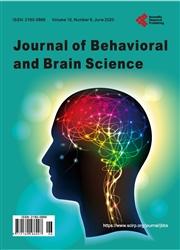A Systematic Review and Meta-Analysis of Depression Prevalence amongst Nigerian Students Pursuing Higher Education
引用次数: 0
Abstract
Depression is one of the most prevalent mental health disorders currently going undiagnosed in many developing countries, including Nigeria. Stigma-tization, inadequate financial resources, poor healthcare infrastructure for accurate diagnosis, and low research attention are contributing factors to the prevalence of depression among youths in West Africa. This study estimated the prevalence of depression among higher education students in Nigeria. Data was extracted and examined from 1225 publications by three independent re-viewers. To minimize bias, the Agency for Healthcare Research and Quality guidelines was used to assess the data. Pooling of logit-transformed data was done using a generalized linear mixed-effects model, while restricted maximum likelihood was used to estimate between-study variance (τ 2 ). Knapp-Hartung adjustments were included for calculating the confidence intervals around pooled effects, and R was used to calculate pooled estimates of depression prevalence. The risk factors of depression were examined by subgroup analyses and random-effect meta-regression models. Egger’s regression was used to check for publication bias in small-sampled studies with high prevalence estimates. Mean age of students across the 18 studies ranged from 19.09 to 26.3 years, with sample sizes ranging from 81 to 1482 participants. The pooled depression prevalence across studies was 26% (95% CI 0.18, 0.36) with high heterogeneity (I 2 = 97%, τ 2 = 0.9512). The subgroup analyses showed that higher education students in the Northwestern region of Nigeria have the highest depression prevalence (45.9%), followed by the South-South region (33%), Sou-theastern (22.1%), and Southwestern region (18.1%). Our findings show that depression among higher education students in Nigeria is highly prevalent. A significant proportion of higher education students in Nigeria are depressed. The尼日利亚高等教育学生抑郁患病率的系统回顾和荟萃分析
抑郁症是目前在包括尼日利亚在内的许多发展中国家未得到诊断的最普遍的精神健康障碍之一。污名化、财政资源不足、缺乏准确诊断的卫生保健基础设施以及研究关注度低是导致西非青少年抑郁症流行的因素。这项研究估计了尼日利亚高等教育学生中抑郁症的患病率。数据由三名独立审稿人从1225份出版物中提取和检查。为了尽量减少偏倚,采用了医疗保健研究和质量机构指南来评估数据。使用广义线性混合效应模型对对数变换后的数据进行池化,而使用限制最大似然来估计研究间方差(τ 2)。采用Knapp-Hartung调整来计算合并效应的置信区间,并使用R来计算抑郁症患病率的合并估计值。采用亚组分析和随机效应元回归模型检验抑郁的危险因素。Egger回归用于检查具有高患病率估计的小样本研究的发表偏倚。18项研究中学生的平均年龄从19.09岁到26.3岁不等,样本量从81到1482人不等。所有研究的合并抑郁症患病率为26% (95% CI 0.18, 0.36),异质性较高(I 2 = 97%, τ 2 = 0.9512)。亚组分析显示,尼日利亚西北地区的高等教育学生抑郁症患病率最高(45.9%),其次是南南地区(33%)、东南部(22.1%)和西南部地区(18.1%)。我们的研究结果表明,尼日利亚高等教育学生中的抑郁症非常普遍。尼日利亚的高等教育学生中有很大一部分患有抑郁症。应该调查导致抑郁症高患病率的因素,特别是在尼日利亚西北地区的高等教育学生中。
本文章由计算机程序翻译,如有差异,请以英文原文为准。
求助全文
约1分钟内获得全文
求助全文

 求助内容:
求助内容: 应助结果提醒方式:
应助结果提醒方式:


